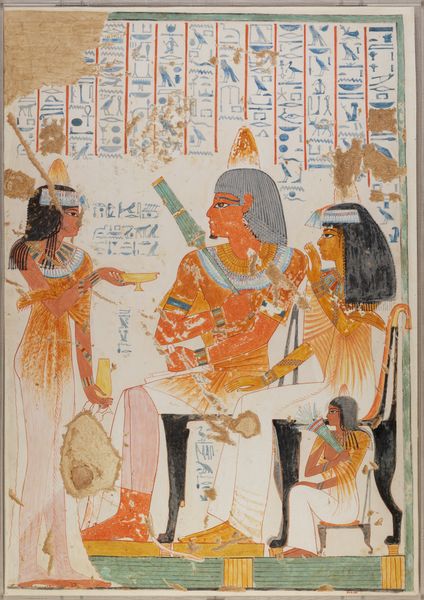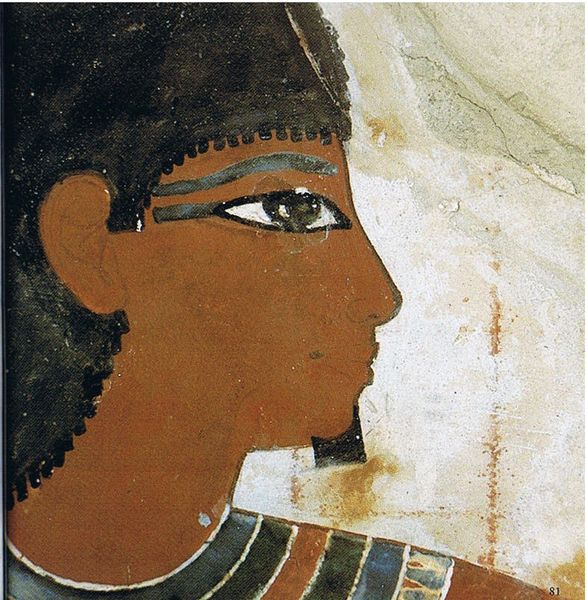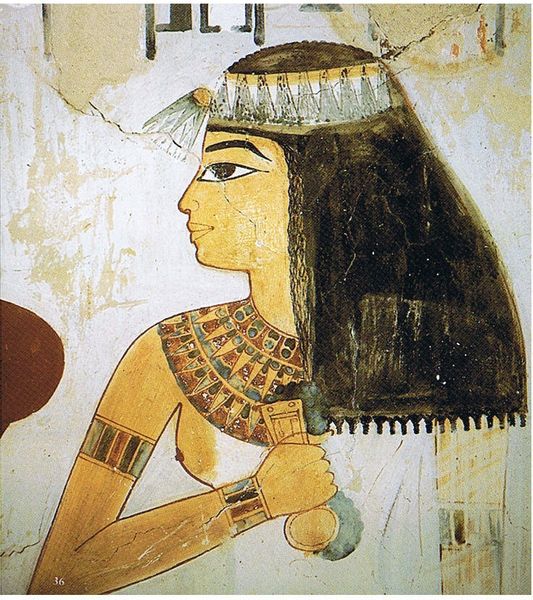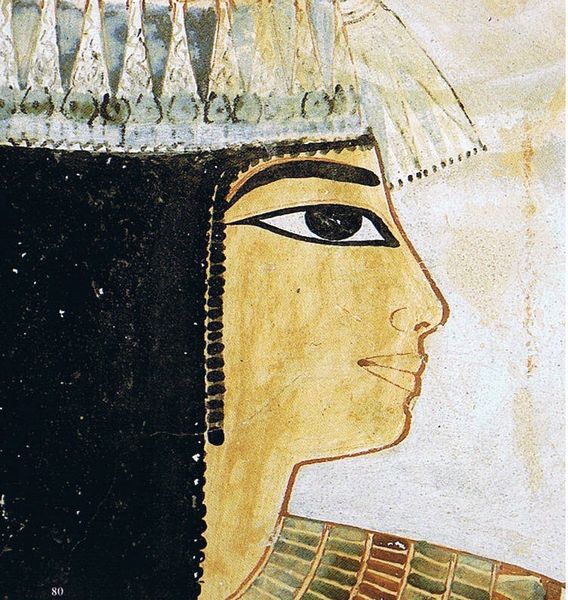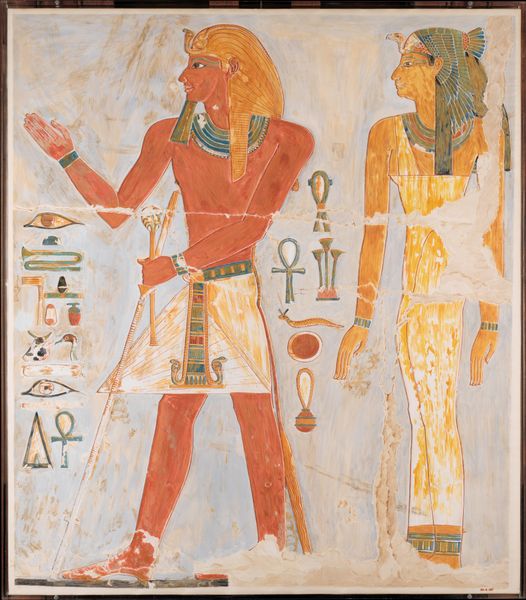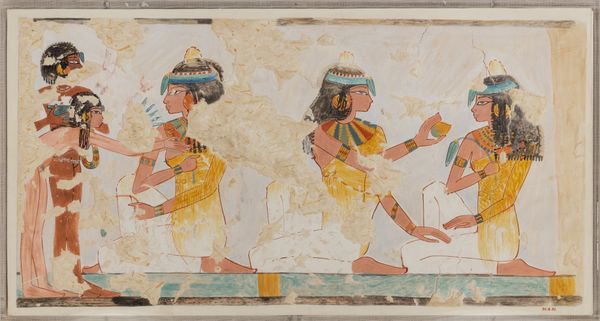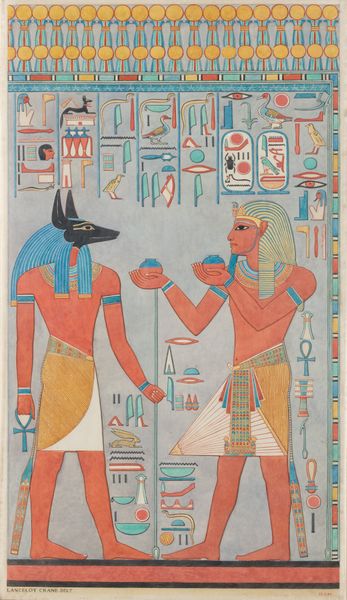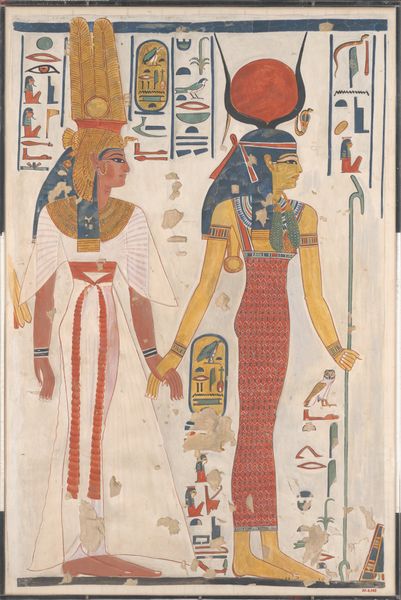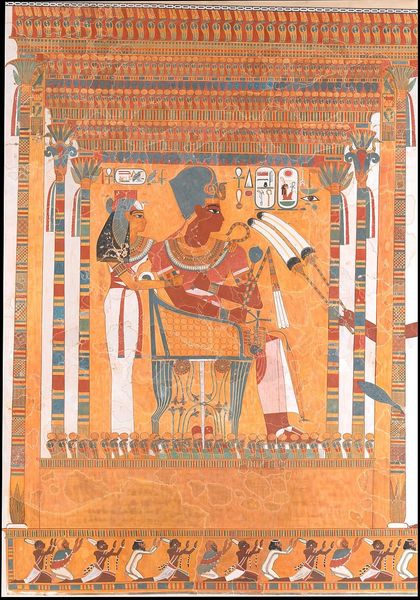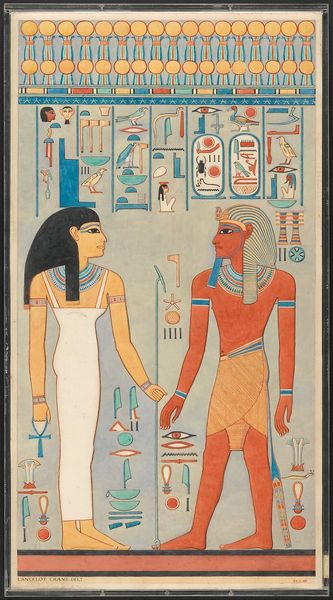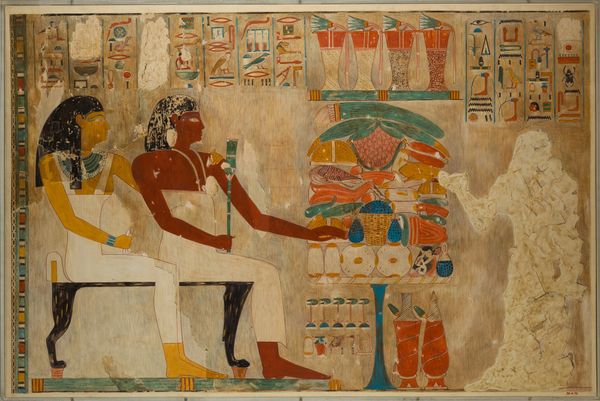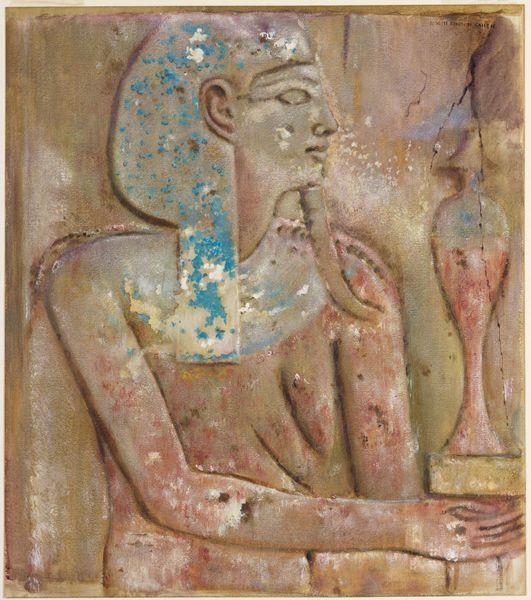
painting, watercolor
#
portrait
#
water colours
#
painting
#
ancient-egyptian-art
#
watercolor
#
egypt
#
ancient-mediterranean
#
group-portraits
#
watercolour illustration
#
history-painting
Dimensions: facsimile: H. 49 × W. 26.5 cm (19 5/16 × 10 7/16 in.) scale 1:2 framed: 50.5 × 27 cm (19 7/8 × 10 5/8 in.)
Copyright: Public Domain
Curator: Here we see "The Mother and Wife of Userhat," a painting originating from the Tomb of Userhat, dating back to approximately 1294 BC. It’s currently housed at the Metropolitan Museum of Art. Editor: My immediate impression is one of serene dignity. The pale watercolors give the figures a certain ethereal quality, even against the stylized background. Curator: Indeed. Ancient Egyptian art, while often viewed through a lens of rigid convention, also provides nuanced insights into familial and social roles. The work presents Userhat’s mother and wife, their presence asserting a statement about lineage, inheritance, and the integral role of women in maintaining dynastic continuity. Consider, also, the sociopolitical impact of the emphasis on family during this time period. Editor: The figures are undoubtedly idealized, yet I wonder what their material conditions really were. These images become tools to examine gender, race, and class dynamics within a structured power system of Ancient Egypt. Note the offerings they hold— cups presumably filled with precious oils, signalling both privilege and funerary obligation. Curator: Absolutely. And to appreciate it, understanding the formal traditions helps; it's vital to know this was part of a larger narrative and societal visual language that served ritualistic purposes. These tomb paintings weren't just decoration, they were thought to impact the afterlife. Editor: Which leads to deeper questions: What agency did the women depicted actually possess? This carefully crafted image certainly participates in and reinforces that agency. The details are so considered - note the placement of birds in the tree above; perhaps symbols of their souls' passage? Curator: Very possibly so. I also notice their ornate jewellery. Each detail works to signify their roles. How the image, located within the tomb context, contributed to constructing, representing and legitimizing these power dynamics. Editor: Ultimately, works such as this demonstrate how historical art pieces are inevitably, also contemporary, interventions. We keep asking new questions. Curator: Yes, understanding its original function allows for nuanced readings today. Editor: Precisely. A vibrant example of Ancient Egyptian life continuing to provoke dialogue.
Comments
No comments
Be the first to comment and join the conversation on the ultimate creative platform.


